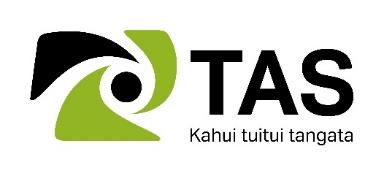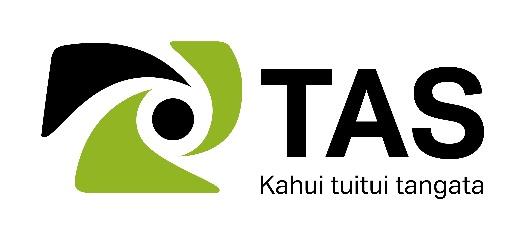 Central Regional Resilience Plan: update for Health Systems Readiness Steering Group
Central Regional Resilience Plan: update for Health Systems Readiness Steering Group
21th October 2021 (Version 0.3)
Central Regional Resilience Plan - Overview
Pro-Equity
The purpose of this plan is to provide advice to DHBs, Ministry of Health and Minister of Health and Associates on what will
be required to build the resilience of the Central Region healthcare system in anticipation of changes in pandemic
management strategy and Government policy settings.
A function is considered resilient if it has the capacity and capability to support sustainable responses to recurring
community resurgences of COVID-19, without limiting the ability to provide effective non-COVID related health care
services.
Key assumptions
Predicted regional numbers per week (in 2022)
Pr
Northern
o
y
(from modelling by TAS)
-
it
u
Region
Eq
q
u
The “worst case scenario” modelling has been used to inform resilience
E
Resilience
it
-
y
o
planning.
Model
Pr
2,570
•
90% adult (16+) vaccination rate.
New cases
•
No vaccination of <12 year olds.
•
Loose public health controls.
134
2436
•
Loose border restrictions.
Hospital admissions
In community
•
Funding assumptions based on period of 12 months (2022 Calendar
Year). Existing Public Health and Testing funding ends June 2022.
•
14
Priority and funding projections have not considered the scenarios
effect on the provision of regional tertiary services.
Deaths
•
Funding requirements include a proportion of existing planned /
Pro-Equity
committed funding.
Priorities to build resilience (DHB level and sub-regional initiatives)
Priority area
Recommendations by December-21
Estimated funding required (NC = Not Costed)
i.
Offering flexible and sustained funding models for Providers, to fund end-to-end COVID service “packages” instead
Increasing Māori and Pacific NGO Providers’
of individual activities including testing, vaccination and welfare support for isolating households.
$29.5m
capacity and capability to offer end-to-end
ii.
Devolving certain activities (e.g. contact tracing case investigation) to Providers with specialised reach into
COVID support services to their communities in a
vulnerable communities.
sustainable way
iii.
Providing funding security to allow workforce growth within Providers.
iv.
Support the establishment of appropriate linkages and pathways of care between Iwi, Māori and Pacific providers
and primary health care providers.
i)
Digitally enabled treatment of Covid at home, in the community.
Developing and delivering care in the
ii) Hospital in the home for Non-Covid patients, releasing capacity in the hospital network.
$52.8m
Community – Hospital in the home / allow
iii) Weighted towards supporting Māori, Pacific and disabled communities. Provide options in the case of overcrowding
people to self-isolate at home.
(e.g. MIQ or ability to rent a cabin for a limited time to isolate at home).
iv) Identify people with current long-term conditions, including anyone immuno-compromised, who may need
specialist support while in isolation (particularly in remote rural locations).
v) Additional workforce, including training and development costs.
vi) Acquiring thermometers, oximeters and other appropriate clinical equipment to support self-isolation.
vii) Appropriate support / training given to ensure whānau can effectively utilise equipment to monitor their condition.
viii) Investment in specific services for disabled people.
Upgrading the facilities and infrastructure within
i.
Air flow changes and negative pressure modifications within hospital facilities to create enduring COVID inpatient
DHBs to expand isolation rooms/ICU
capacity.
capacity/primary care facilities and adequately
ii.
Upgrade ICU facilities to ensure safe delivery of intensive care when living with COVID in the hospital.
$268.2m
staff building access points
iii.
Repurpose existing office space into clinical assessment and treatment areas.
iv.
IT and infrastructure to integrate clinical information.
v.
Managing front door to Hospital screening, assessment, triage disposition and flow streaming (consider rapid
antigen testing for staff and patients entering hospital facilities).
vi.
Provide rapid and affordable access to Occupational Health & Safety assessors to review Primary Care facilities to
provide home based monitoring of cases in quarantine at home and/or contacts isolating at home.
vii.
Additional infrastructure to increase outreach capacity to provide care extremal to hospital settings.
viii. Improve ARC capacity and provide support for additional beds.
i)
Increasing collaboration by immediate rollout of Microsoft Teams to all DHB staff.
Information Technology Infrastructure, Support
ii) Implementation of eReferrals capability for key clinical services.
$22.6m
and Equipment to support whole of DHB system
iii) Expansion of clinical services on DHB sites.
resilience
iv) Increased staffing count incurs software licensing costs and mobile devices.
v) Implementation of hospital wide patient tracking.
vi) Specific ICT resources with a specific focus on data, forms and information supporting pro-equity
access, improvements to services and outcomes.
vii) Implement or make visible a connected IT service between primary and secondary care to ensure connected health
records can be visible.
i.
Expansion in case investigation and contact tracing teams and functional leadership support (including sufficient
Sustainable Public Health Model that includes
Māori and Pacific staffing and community liaison).
$19.1m
building the case investigation capacity within
ii.
Resource FTE within Iwi and Māori providers to enact living with COVID requirements across Māori communities.
the region.
iii.
Catch up on recognised screening programmes e.g. breast, cervical, school dental, cardiovascular leading to better
health outcomes through early detection.
iv.
Provide all community vaccination providers incl PHO, Maori and Iwi and other NGO providers funding security.
i.
Increasing nurse led primary and community services, with appropriate clinical oversight to support the increase
Community Response
capacity needed in the area of frailty and paediatrics and acute demand in the community.
$18.2m
ii.
Coordinated and streamlined approach for the management of individuals and whānau within the community to
provide care to enrolled and unenrolled patients aiming to reduce admissions, reduce ED and GP presentations.
iii.
To provide consistent clinical leadership to all residential providers to enable to them to extend the level of care
that they provide within the service.
iv.
Rapid response for deteriorating Covid-19 patients or those with an acute exacerbation of a chronic condition at
home or in care (e.g. aged and residential care, disability support service) to prevent avoidable hospital admission.
i.
Enhanced leadership, clinical governance, quality, planning and delivery management teams.
Enhancing DHB Incident Management Capability
ii.
Provide baseline community site capacity and increased mobile in-home testing capacity.
$6.8m
and COVID19 Response
iii.
Prepare for surge testing capacity at established testing pop-up and targeted community (suburb-level) sites.
iv.
Meeting broad range of operational demands on a 24/7 basis, including Border, MIQ, Vaccination and community
Isolation.
 Central Regional Resilience Plan: update for Health Systems Readiness Steering Group
Central Regional Resilience Plan: update for Health Systems Readiness Steering Group
21th October 2021 (Version 0.3)
Scenario modelling overview
The below assumptions have been used to model the predicted impact of COVID in the Northern Region in 2022.
Key assumptions (Full assumptions available on request)
•
90% adult vaccination rate by Dec 2021.
Over 2022 year
Average per week in 2022
•
Children ages 12-15 are vaccinated.
Hospitali
% cases % deaths
Hospitali
•
0-11 year olds not vaccinated.
DHB
Cases
Deaths
Cases
Deaths
-sations
M or P
M or P
-sations
•
Borders are opened 1 Jan 2022.
•
Restrictions remain on travel to some countries, but otherwise quarantine-
Capital and Coast 43,800
2,100
200
22.3
37.9
840
41
4
free travel is occurring.
•
Assume Delta variant is main issue, medium R0 = 4.5 per REF.
Hutt Valley
22,400
1,200
110
29.4
42.1
430
22
2
•
Assume variation in coverage by community around the average
vaccination coverages.
Wairarapa
6,700
380
40
26.5
30
130
7
1
•
Vaccine efficacy (Pfizer) against Delta = 88%, against severe disease 94%.
MidCentral
25,800
1,300
140
27.9
33.6
500
25
3
•
Assume severity proportions as per REF.
•
Vaccine reduction in transmission - 85%.
Hawkes Bay
21,100
1,500
150
37.1
44.7
480
28
3
•
No further community lockdowns, but case isolation and contact tracing
Whanganui
9,700
590
60
36.7
45.9
190
11
1
e.g. as measles is managed now, drops R0 44% [REF p11].
•
Health care workers at 93% coverage - assume other groups slightly lower.
Total Regional
133,500
7,100
700
28.6
39.4
2570
134
14
•
M + P have 2.5 and 3x the rate of hospitalisation as European/Other.
Priorities to build resilience (Regional)
Priority area
Assumptions & notes
Estimated funding required (NC = Not Costed)
i.
Establish governance, processes and procedures in the establishment of a virtual EOC for the region.
Establishment of Central Regional Health
ii.
Provide infrastructure at regional hubs to support operations.
$9.4m
Coordination Centre
iii.
Increased analytics and forecasting resources.
i.
Successfully deliver an integrated 2022 regional vaccination programme (included targeted booster shots,
Regionwide Public Health Initiatives
combined general population booster and seasonal flu vaccination).
$39m
i.
Provide remote access and consult liaison services for regional specialist mental health and addiction services (as
Psychosocial Response (Mental Health and
appropriate). Particularly for Maternal, Eating Disorders and Rangatahi services.
$NC
Addictions)
i.
Supporting and enabling our teams to continue working effectively e.g., Wellness support and Fit testing
Workforce Development, Training and Support
programme.
(add capacity)
ii.
Building sufficient equity workforce to support whanau.
iii.
Increased capacity and capability in infectious diseases and infection control, including outreach.
iv.
Enhancing Clinical advice and support, e.g., IPC advice, new testing etc.
$26.8m
v.
MoC staffing changes to support BAU alongside COVID ( Screening security and orderlies).
vi.
Taking a whole of system training and education (e.g., rest homes).
vii.
Increasing disability team capacity to respond to whole of system resilience, including specific supporting
workforce e.g. Kaiawhinas and resource development.
viii. Increased support for General Practice (GP) teams due to low ratio of GP : Population.
ix.
Professional development and training, including pathways education, including pro-equity programmes.
x.
Growing the unregulated workforce including Door Screening workforce, rapid testing capacity
xi.
Development and maintenance of procedures and protocols e.g., IPC advice, screening,
xii.
Model of Care changes (i.e. hospital in the home).
COVID Specific Facilities
i.
Ongoing management of COVID in the community may require specific, dedicated facilities.
$NC
Priorities to build resilience (National)
Priority area
Assumptions & notes
Estimated funding required (NC = Not Costed)
i.
National response to Mental Health and Addictions spike due to COVID restrictions and consequences.
Psychosocial Response (Mental Health and Addictions)
$NC
i.
Recruitment campaign to attract nursing and GP shortages (amongst other critical workforces).
Workforce
$NC
i.
Ensure Primary and Community; Hospital and Specialist services are aware of agreed clinical pathways.
Clinical review of decision making and treatment
ii.
Training, leadership and revised Governance Support.
$NC
option and ethics of COVID patients
iii.
Ensure all resources, staffing, medical devices and medications are available to support care at the appropriate
site.
i)
Create a voucher system of food, clothing, children's items, medication, masks, hand hygiene and telecoms or clarify
Standardised welfare/manaaki package
role of MSD and Whanau Ora to scale up welfare alongside health response: Thriving Communities.
$NC
ii) The ability to retain SIQ when home isolation is unsuitable (e.g. domestic violence or overcrowding).
Establish clinical senate that provides advice
i.
Establish structured webinars and forums for shared learnings to rapidly diffuse learnings across regional and
$NC
based on learnings, international and best
nationally.
practice
Supply Chain Security
i.
In the case that a community model of care was implemented that required a direct supply chain to individuals
$NC
(not providers) there will be a substantial piece of work needed to uplift our supply chain capability to service this.

